Vibrating razors isn’t a new idea. The idea is almost older than radio. That don’t make it a good idea, even if some have been moderately successful. That didn’t stop Arthur Kuris, Lewis Balamuth, and Anthony P Farina from filing a patent for a new take on the idea in 1971. Behold; the Ultrasonic razor!
Or, to use the full title of the patent that was granted in ’74; Ultrasonic replaceable shaving head and razor.
As we have discussed before, moving the edge of the razor back and forth isn’t a great idea. To paraphrase a pamphlet from 1845; A razor is NOT a saw. If you have to move the cutting edge back and forth to get the hair, your problem is that the edge isn’t sharp enough.
So, after that little rant, what were our intrepid trio actually trying to achieve? Let us turn to the patent text:
An object of this invention to provide a readily replaceable novel shaving head which shall be particularly adapted to be driven in the ultrasonic frequency range for regular personal hygienic care to remove hair from the body in shaving.
From US patent 3,793,726
Another object of the present invention is to provide a novel shaving head which is coupled to an ultrasonic vibratory hand-held instrument and capable of withstanding use for prolonged periods of time without the blade element of the head fatiguing.
Another object of the present invention is to provide an ultrasonic head having a base with a blade secured thereto and which blade vibrates at substantially the same frequency of vibration as the base for comparatively long periods of time without fatiguing.
Another object of the present invention is to provide a novel head for use with a shaving implement that is readily replaceable.
Another object of the present invention is to provide a shaving head having a body with a blade extending therefrom which is designed to flexurally vibrate at its free end.
Another object of the present invention is to provide an ultrasonic shaving head in which the blade extending from the body projects outwardly to engage the skin.
So… in layman’s terms, a cartridge suitable for use with ultrasonic vibrations. Gotcha.
As an added wrinkle, the cartridge is the whole shave head and part of the handle.
For those not up on their physics, ultrasonic waves is sound waves with frequencies higher than the upper audible limit of human hearing. Apart from that, they are not fundamentally different than other sound waves. Since most people can’t hear sound with a frequency above 20.000 Hz, ultrasound is commonly defined to be above 20 KHz.
Interestingly enough, the proposed frequency range for the ultrasonic razor was 5 KHz to 1 MHz, which means that the lower part of the range was not ultrasonic. For comparison sake, medical imaging ultrasound machines operates from 2 MHz to 18 MHz, well above the range of this device.
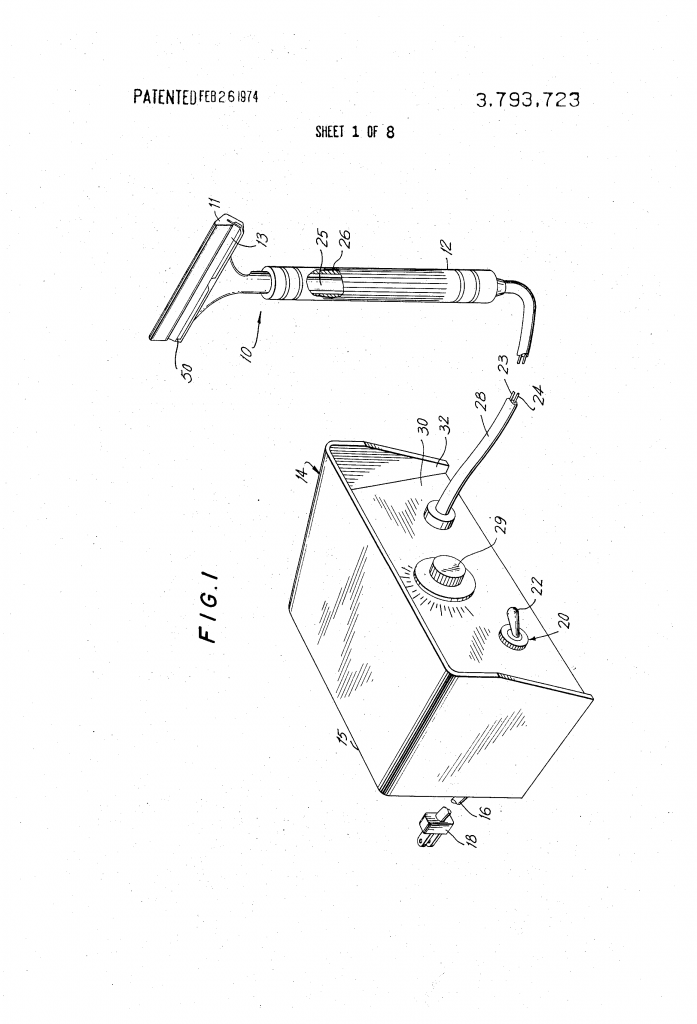
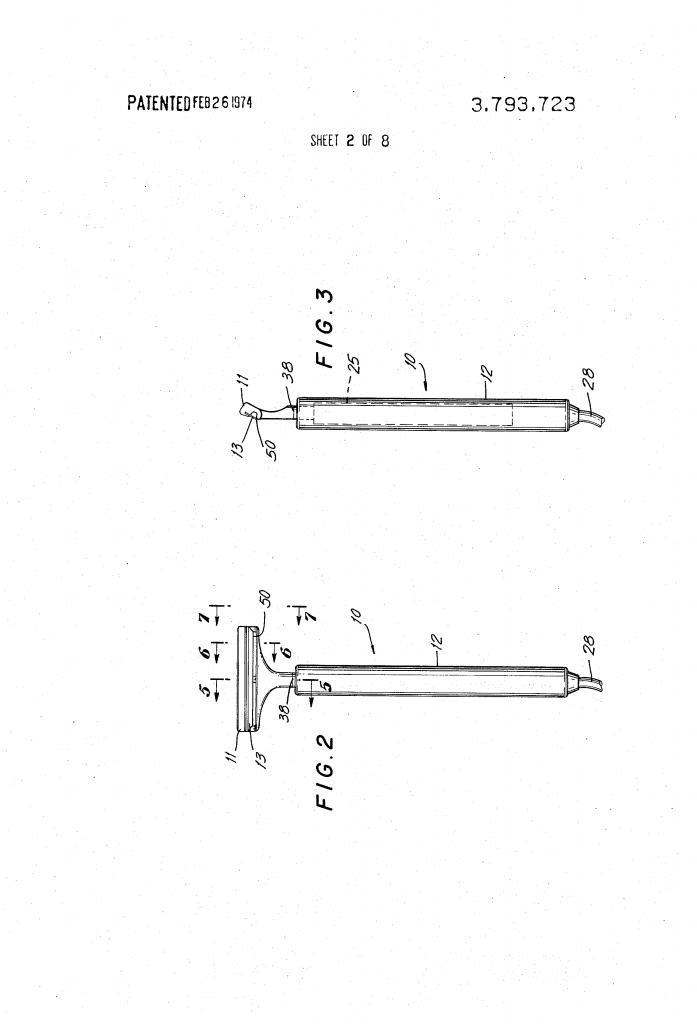
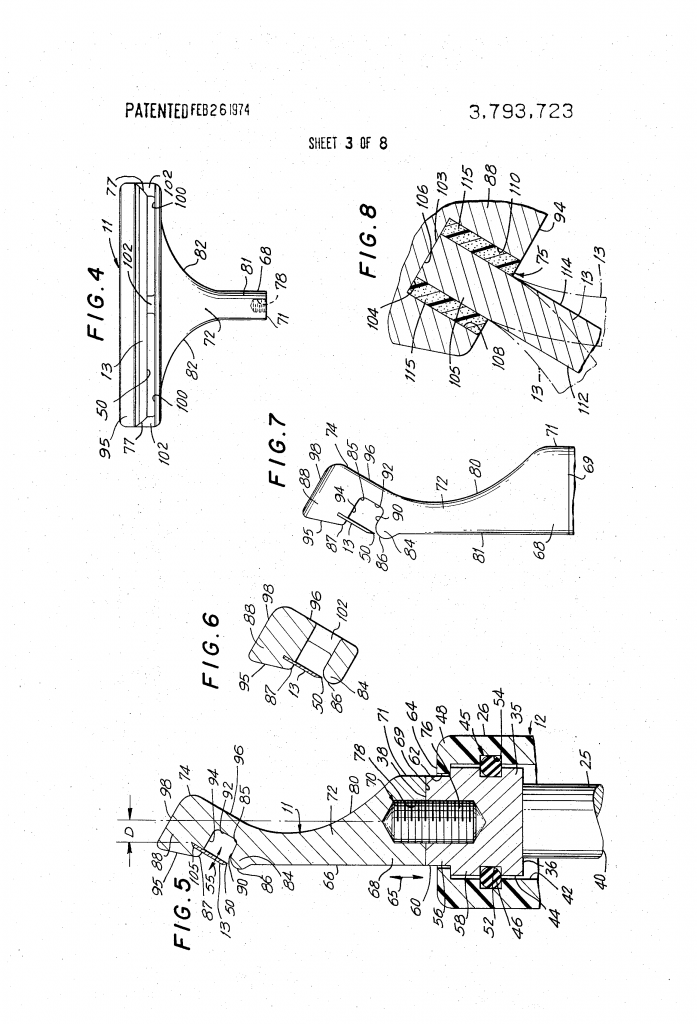
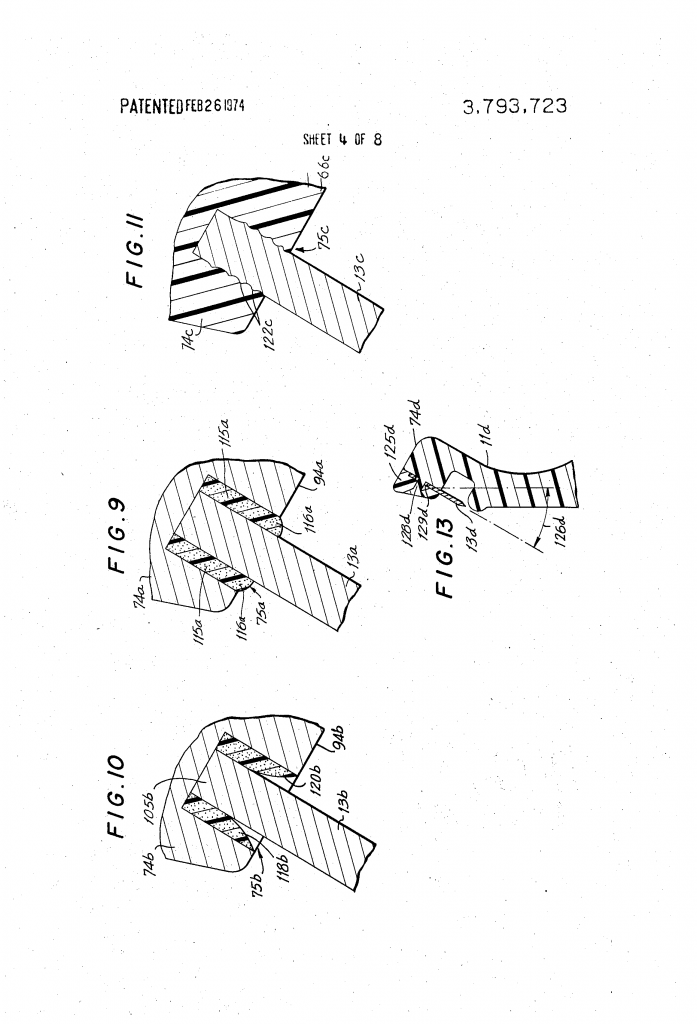
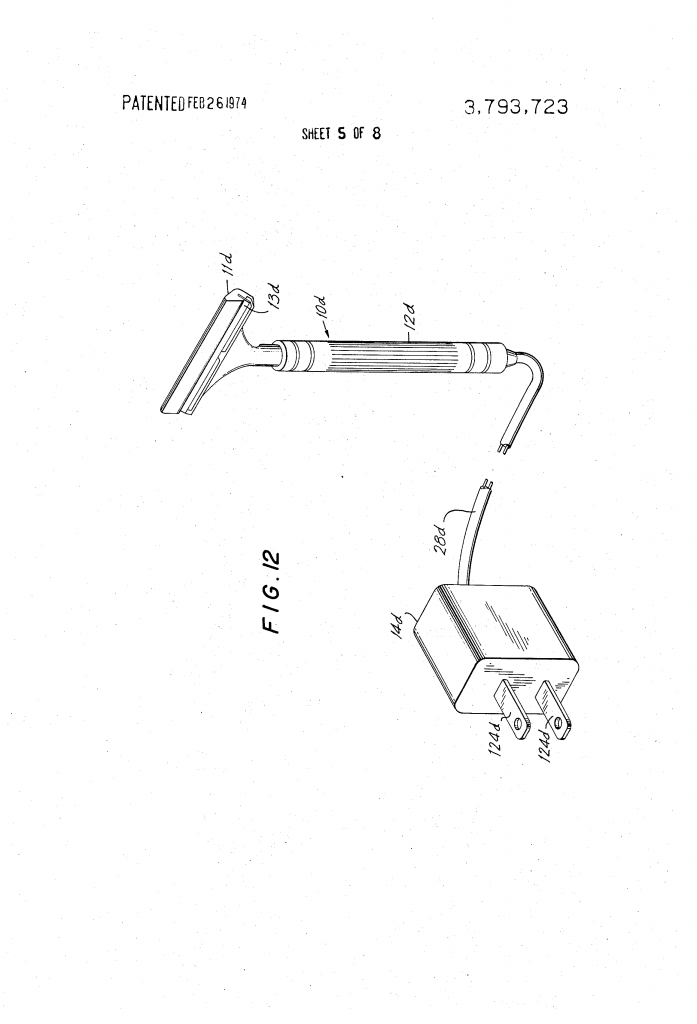
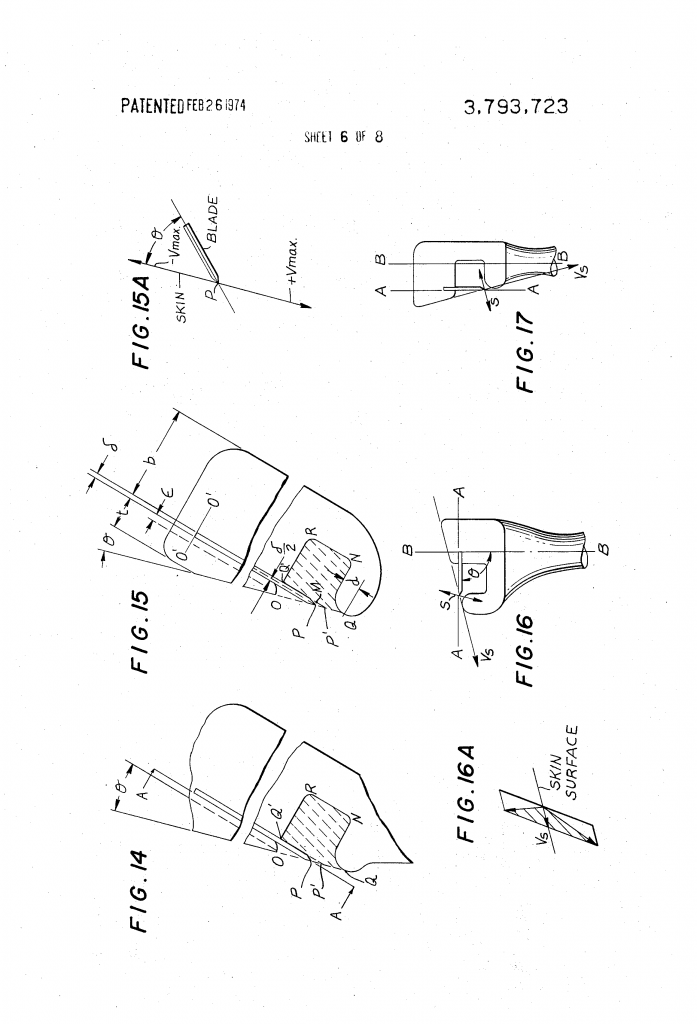
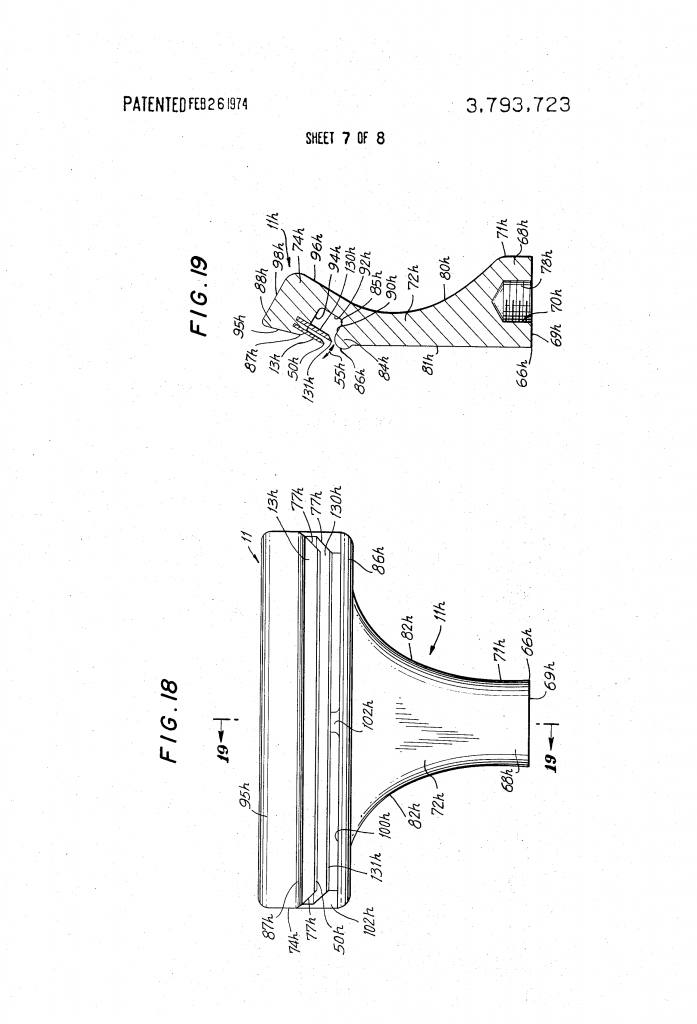
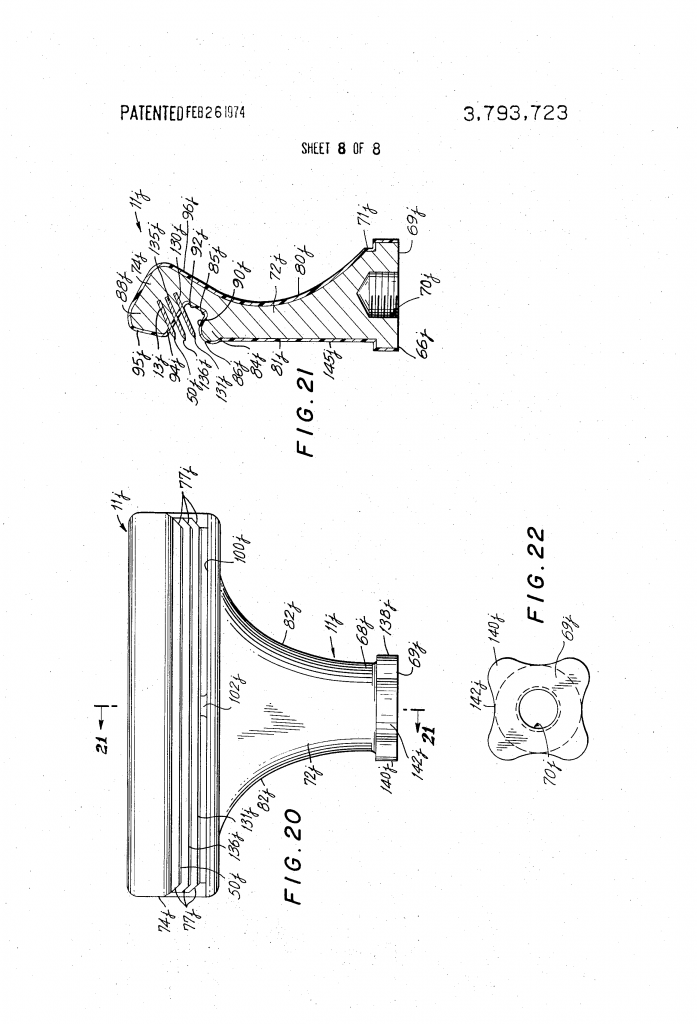
This was not a handy device, as can be seen from the drawings and patent text. You needed space on your vanity for a power supply, as well as an outlet nearby. I just hope they were planning to use a grounded outlet, even if the patent drawing shows a standard two pronged plug. The ultrasonic transducer is placed in the handle of the razor, meaning the whole thing shakes in your hand. Would probably work great with soapy, slippery fingers…
Figure 1 is an overview of the preferred form of the invention. Note the on-off switch and rheostat for adjusting just how badly the razor would shake.
Figure 2 and 3 are two view of the ultrasonic transducer – or razor handle, if you prefer – and cartridge.
Figure 4 is a head on view of the cartridge. Figures 5, 6, and 7 are more details on the cartridge construction.
Figures 8, 9, 10, and 11 shows ways of bonding the blade to the cartridge. this would be a critical point in the design, since you would want the vibrations to transmit to the blade.
Figure 12 is a different implementation of the whole shebang, without an on-off switch and the ability to adjust the frequency. Still not using a grounded plug though.
Figure 13 shows a different way to construct the cartridge.
Figures 14, 15, 15A, and 16A deals with details on blade geometry. The patent text explaining these are dense and I can tell it is a long time since I had any physics classes.
Figures 16 and 17 shows the blades mounted at different angles.
Figures 18 and 19 shows a two bladed cartridge.
And finally, figures 20 and 21 shows a three bladed cartridge.
I can see why the ultrasonic razor didn’t take off. It was big and bulky. It would likely produce a high pitched whine in use. And it required specialised cartridges. There is many drawbacks to the idea and design.
On the upside, you might know if you’re having a baby… just don’t expect to get a good look at it. With the low frequency, the resolution would be fairly low.
The full patent can be read on Google patents. You can also read a previous patent by one of the inventors for an ultrasonic double edged razor.

Pingback: Ultrasonic razor - Razors n Blades the shave that saves